More about Virgin and Child Enthroned
- All
- Info
- Shop
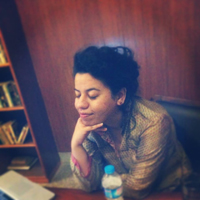
Contributor
The turtles of the Renaissance may have caused more of a ruckus in the art world, but let’s give credit where credit is due…give it up for Giotto de Bondone!
THE forerunner of the Renaissance! Giotto’s Madonna is what irreversibly turned the heads of the fourteenth century European population and beyond, towards what we now consider elementary knowledge in the disciplines of drawing and painting. Stuff like perspective and depth can be attributed to this Italian artist, and one wonders where would art be without this guy? I always enjoy placing Giotto’s Madonna by his master, Cimabue’s in my Foundations in Art History class and making students compare the two. Kind of like an art historical “spot the difference” but with some obvious clues (aka Giotto’s is better). It sucks when your student becomes the master…I feel for you, Cimabue.
Also known as the Ognissanti Madonna from her primary residence at the Church of Ognissanti in Florence, this Madonna is a hefty lady compared to the wispy ones from earlier years. She definitely broke all the pre-existing norms for how human bodies ought to be represented (see: Never Met a Girl Like You Before for appropriate soundtracks). Before this, all the Virgin moms barely had any presence, in terms of actual visual weight. So Giotto, faithful to nature, painted this plus-sized Madonna (relatively speaking) who, for the first time in the history of biblical painting, has actual boobs! You can see those contoured curves puffing out behind layers of white, translucent cloth. That’s no shrinking violet right there. Let’s take a moment of silence to remember the bygone days of flat-chested Mary’s…this Virgin Mary is solid and here to stay.
Baby J is holding up a peace sign going “I got this…” while sitting on her actual knee. Not just floating in some undefined space that could be her knee, as Baby J’s would have appeared before, but on an actual flesh and bone kinda knee. Let’s hear it for spatial depth and anatomically correct drawing. We owe Giotto a lot. Still… he could’ve worked a bit more on those flesh tones while he was making progress in the name of art and being true to nature. What’s with the pale grey skin? Could he have been using corpses for models? Yikes. These guys could do with a protein shake and some bronzer...
Featured Content
Here is what Wikipedia says about Ognissanti Madonna
Madonna Enthroned, also known as the Ognissanti Madonna or Madonna Ognissanti, is a painting in tempera on wood panel by the Italian late medieval artist Giotto di Bondone, now in the Uffizi Gallery of Florence, Italy.
The painting has the traditional Christian subject, of the Madonna and Child, representing the Virgin Mary and the Christ Child seated on her lap, with saints and angels surrounding them on all sides. This particular representation of the Virgin, enthroned and surrounded by a court-like company, is called a Maestà, a popular representation at the time. It is often celebrated as the first painting of Italian Renaissance painting due to its newfound naturalism and escape from the constraints of Italo-Byzantine and Gothic art.
It is generally dated to around 1310. While historians have had trouble finding specific information for indisputably attributing many of Giotto's works to the artist, Madonna Enthroned is one piece for which there are a few documents supporting its creation by Giotto. There are many sources that show he spent many years living and creating in Florence. However, the main source that documents Madonna Enthroned specifically is artist Lorenzo Ghiberti's autobiography, I Commentarii (1447). An earlier manuscript document of 1418 also attributes the painting to Giotto, but it is Ghiberti's autobiography that provides the most solid evidence.
One of Giotto's later works, Madonna Enthroned was completed in Florence, upon the artist's return to the city. It was originally painted for the Ognissanti church in Florence. Built for the Humiliati, a small religious order at the time, the church had many acclaimed paintings designed for it. Specifically, Giotto's Madonna Enthroned was designed for the high altar.
Check out the full Wikipedia article about Ognissanti Madonna

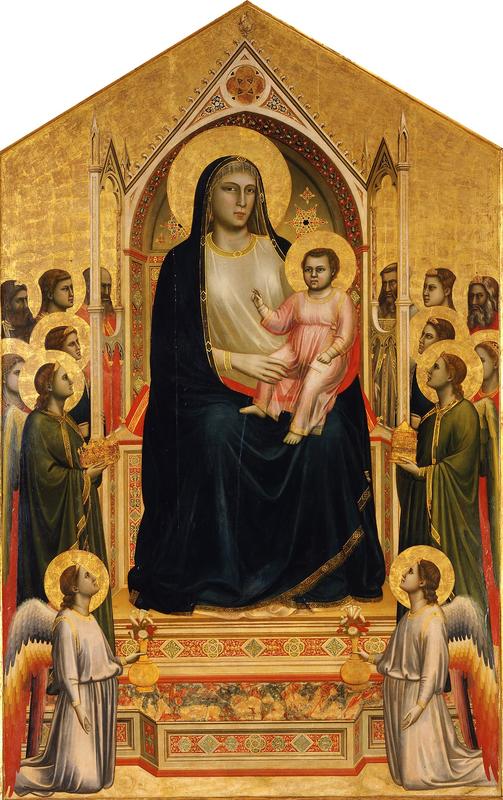
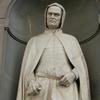
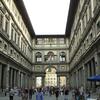
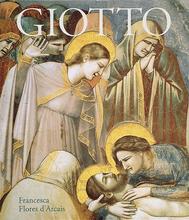











From the figure modeling, patterned steps and so on, we can see that the painter is trying his best to express a spatial structure. Giotto's efforts were in the midst of a long break with the Byzantine art tradition.